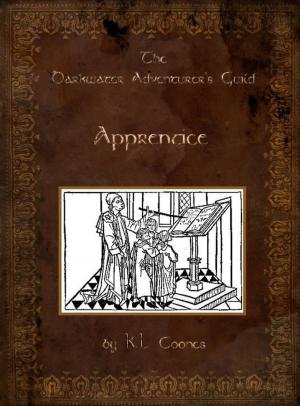King Vikram and the Vampire
Classic Hindu Tales of Adventure, Magic, and Romance
Kids, Fiction, Fantasy and Magic, Teen, Fiction - YA, Fantasy| Author: | Sir Richard F. Burton | ISBN: | 1230000101860 |
| Publisher: | Sonics Publications | Publication: | January 23, 2013 |
| Imprint: | Language: | English |
| Author: | Sir Richard F. Burton |
| ISBN: | 1230000101860 |
| Publisher: | Sonics Publications |
| Publication: | January 23, 2013 |
| Imprint: | |
| Language: | English |
King Vikram and the Vampire is the history of a huge Bat, Vampire, or Evil Spirit which inhabited and animated dead bodies. It is an old, and thoroughly Hindu, Legend composed in Sanskrit, and is the germ which culminated in the Arabian Nights, and which inspired the "Golden Ass" of Apuleius, Boccacio's "Decamerone," the "Pentamerone," and all that class of facetious fictitious literature. The story turns chiefly on a great king named Vikram, the King Arthur of the East, who in pursuance of his promise to a Jogi or Magician, brings to him the Baital (Vampire), who is hanging on a tree. The difficulties King Vikram and his son have in bringing the Vampire into the presence of the Jogi are truly laughable; and on this thread is strung a series of Hindu fairy stories, which contain much interesting information on Indian customs and manners. The following translation is rendered peculiarly; valuable and interesting by Sir Richard Burton's intimate knowledge of the language. To all who understand the ways of the East, it is as witty, and as full of what is popularly called "chaff" as it is possible to be. There is not a dull page in it, and it will especially please those who delight in the weird and supernatural, the grotesque, and the wild life.
King Vikram and the Vampire is the history of a huge Bat, Vampire, or Evil Spirit which inhabited and animated dead bodies. It is an old, and thoroughly Hindu, Legend composed in Sanskrit, and is the germ which culminated in the Arabian Nights, and which inspired the "Golden Ass" of Apuleius, Boccacio's "Decamerone," the "Pentamerone," and all that class of facetious fictitious literature. The story turns chiefly on a great king named Vikram, the King Arthur of the East, who in pursuance of his promise to a Jogi or Magician, brings to him the Baital (Vampire), who is hanging on a tree. The difficulties King Vikram and his son have in bringing the Vampire into the presence of the Jogi are truly laughable; and on this thread is strung a series of Hindu fairy stories, which contain much interesting information on Indian customs and manners. The following translation is rendered peculiarly; valuable and interesting by Sir Richard Burton's intimate knowledge of the language. To all who understand the ways of the East, it is as witty, and as full of what is popularly called "chaff" as it is possible to be. There is not a dull page in it, and it will especially please those who delight in the weird and supernatural, the grotesque, and the wild life.















